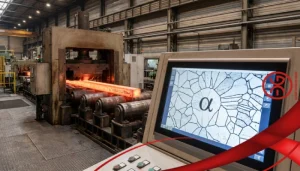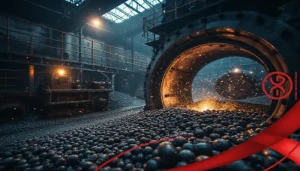In the world of mineral processing and comminution, the efficiency of a grinding mill is a direct driver of operational profitability. Central to this efficiency is the grinding media, and among the most critical decisions a mill operator or metallurgist must make is the selection of the media size. The topic of different sizes of mill balls is far more than a simple inventory choice; it is a complex engineering decision that profoundly impacts mill throughput, energy consumption, and the final particle size distribution. An incorrect choice can lead to inefficient grinding, excessive energy waste, and a higher cost-per-ton milled.
At Alpha Grinding Media, we believe that an informed decision is a profitable one. This guide provides an in-depth, technical exploration into the science and strategy behind selecting from the different sizes of mill balls. We will move beyond a basic overview to discuss the fundamental principles of grinding, the key factors that dictate size selection, and the impact of these choices on your circuit’s performance.
The Fundamental Principle: Linking Ball Size to Grinding Action
To understand why there are so many different sizes of mill balls, one must first understand the two primary mechanisms of grinding
- that occur inside a mill: Impact Grinding: This is the primary mechanism for breaking down large, coarse particles. Larger, heavier grinding balls, when lifted by the rotation of the mill, possess greater kinetic energy. As they cascade and cataract, they strike the larger ore particles with significant force, causing them to fracture. This high-impact action is essential in the initial stages of grinding.
- Attrition Grinding (Abrasion): This is the dominant mechanism for grinding finer particles. It occurs when particles are caught between the surfaces of the grinding media and are broken by compressive and shear forces. Smaller balls provide a significantly greater total surface area within the mill charge, which increases
the probability of particle-media interaction and enhances attrition.
The selection of the different sizes of mill balls is therefore a strategic balance between ensuring sufficient impact energy to break the coarsest feed material while providing enough surface area for the efficient attrition of finer particles.

Significance of ball mill balls
The ball mill steel balls are crucial consumables for the grinding plant. They need replenishing at intervals to maintain grinding quality and rate. The number of balls in a ball mill significantly affects the grinding efficiency, and finding the optimal quantity is essential for maximizing performance.
Ball mill operation
The ball mill is an indispensable piece of equipment in mine beneficiation plants, constituting a significant portion of the investment. The quality, quantity, and size of the steel balls in the ball mill directly impact its grinding effectiveness. As the ore block is ground, the steel balls wear down over time, leading to a considerable consumption of grinding balls.
The Effect of Ball Load
The efficiency of the ball mill heavily relies on the proper amount of grinding balls loaded into it. Overloading the ball mill with too many balls results in overlapping, diminishing the grinding effect. Conversely, insufficient ball loading reduces the capacity between the balls, prolonging the grinding process and lowering efficiency. Therefore, optimizing the ball load is crucial for maximizing grinding efficiency and minimizing energy consumption.
Key Factors Influencing the Selection of Different Sizes of Mill Balls
Choosing the optimal ball size is a site-specific calculation that depends on a variety of operational parameters. A thorough analysis of the different sizes of mill balls must consider the following critical factors.
1. Feed Size (F80)
This is arguably the most important factor in determining the required top size of the grinding media. The F80 value represents the mesh size through which 80% of the feed ore passes. Larger feed particles require larger balls with higher impact energy to initiate fracture. A common practice is to calculate the required top ball diameter using established empirical formulas that directly correlate it with the feed size. Without the right top-size ball, the mill will be unable to effectively break the coarsest fraction of the ore, a condition which severely reduces mill throughput. This is a primary consideration when choosing from the different sizes of mill balls.
2. Mill Diameter and Speed
The physical characteristics of the grinding mill itself play a crucial role. A mill with a larger diameter will lift the balls higher, generating greater impact velocity and energy upon descent. Similarly, the rotational speed of the mill (typically expressed as a percentage of the critical speed) influences the trajectory and energy of the media. A larger mill or one operating at a higher speed may be able to achieve the necessary impact force with a slightly smaller top-size ball, which can enhance overall grinding efficiency. The interplay between mill dynamics and the different sizes of mill balls is critical.

3. Ore Hardness and Characteristics
The physical properties of the ore being processed are a major consideration. Harder, more competent ores require greater impact energy to break, necessitating the use of larger and heavier grinding balls. Conversely, softer, more friable ores can be broken effectively with smaller media. Ore characteristics like abrasiveness and density also influence the optimal choice among the different sizes of mill balls. At Alpha Grinding Media, we help clients analyze these properties to make the best selection.
4. Target Product Size (P80)
The desired fineness of the final product is another key determinant. If the goal is a very fine grind (a low P80 value), the mill charge must have a sufficient population of smaller balls. These smaller media provide the vast surface area required for the attrition grinding that is necessary to produce ultra-fine particles. Therefore, the required product size directly influences the ideal distribution of the different sizes of mill balls.
5. Grinding Stage (Primary vs. Regrind Mills)
The role of the mill in the overall circuit is a critical distinction. A primary ball mill receives coarse feed directly from a crusher or SAG mill and requires a top size of balls large enough to handle this material. A secondary or regrind mill, however, receives a much finer feed and is tasked with grinding it down to the final product size. These mills operate much more efficiently with a charge of smaller balls, as high impact energy is not required and a large surface area for attrition is the primary need. The selection of different sizes of mill balls must be tailored to the specific stage of comminution.

Evaluating Milling Ball Efficiency: Assessing Size and Distribution
Based on experience, determining the reasonableness of milling ball loading can be assessed through two key indicators:
- Monitoring the reduction in sand return under constant classifier overflow fineness and ore supply in the ball mill indicates strengthened grinding functionality, suggesting an appropriate ball loading. In such cases, adding more balls can enhance grinding efficiency.
- Analyzing the sand return results from the classifier:
- If there’s an increase in the particle size of materials near the overflow, it signifies an insufficient proportion of steel balls, necessitating an increase in ball loading.
- Conversely, if coarse particles increase in the returned sand, it suggests a shortage of large balls, indicating the need to add more large-sized balls.
These observations help in assessing and adjusting the milling ball loading for optimal grinding performance in the ball mill.
The Alpha Grinding Media Advantage: Precision in Every Size
At Alpha Grinding Media, we understand that predictable performance comes from consistent quality. We specialize in the manufacturing of high-quality forged steel grinding balls, produced to the tightest dimensional tolerances. We offer a comprehensive range of different sizes of mill balls, ensuring that our clients can source the precise media required for their specific application. Our technical team works closely with operations to analyze their circuit parameters and recommend a top-up strategy that optimizes performance and reduces total cost of ownership. Choosing the right partner is as important as choosing from the different sizes of mill balls.
Conclusion
The selection of grinding media is a science. The process of choosing from the different sizes of mill balls requires a thorough understanding of comminution principles and a careful analysis of multiple operational variables. It is a strategic balance between providing high-impact force for coarse breakage and sufficient surface area for fine attrition. An optimized ball charge, tailored to the specific feed, mill, and product requirements, is fundamental to achieving maximum throughput and energy efficiency. At Alpha Grinding Media, our expertise is not just in manufacturing a superior product, but in helping our clients harness the power of that product through intelligent selection and application of the different sizes of mill balls.
Frequently Asked Questions (FAQ)
1. What happens if the grinding balls used are too large for the application?
Using balls that are too large leads to several inefficiencies. It results in wasted energy, as the excess impact force is not required. The grinding of finer particles becomes highly inefficient due to the reduced surface area. It can also lead to increased wear on the mill liners and a higher overall media consumption cost. This is a common issue when the range of different sizes of mill balls is not correctly matched to the ore.
2. Conversely, what is the consequence of using balls that are too small?
If the top-size balls are too small, they will not possess sufficient impact energy to effectively break the coarsest particles in the feed. This condition, sometimes called “ball nipping,” will lead to a significant drop in mill throughput, as the larger particles accumulate in the mill without being broken down efficiently. It is a clear sign that the selection among the different sizes of mill balls is incorrect.
3. How often should the distribution of the different sizes of mill balls be checked?
The equilibrium charge is typically measured during scheduled maintenance shutdowns or dedicated “crash” inspections of the mill. By taking a representative sample of the charge and performing a size analysis, operators can verify that the ball charge is balanced and that their top-up strategy is effective. This data is crucial for optimizing the use of different sizes of mill balls.
4. Is it more important to have the right size or the right quality of grinding media?
They are equally critical and interconnected. Having the perfect distribution of different sizes of mill balls is useless if the media is of poor quality and breaks or deforms quickly in the mill. Broken media fragments and non-spherical balls drastically reduce grinding efficiency. A high-quality, durable grinding ball (like the forged steel media from Alpha Grinding Media) maintains its shape, wears predictably, and ensures that the grinding performance designed by the size selection is actually delivered.





